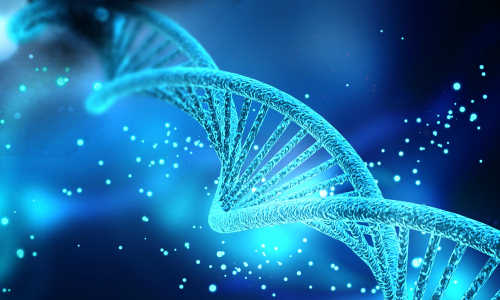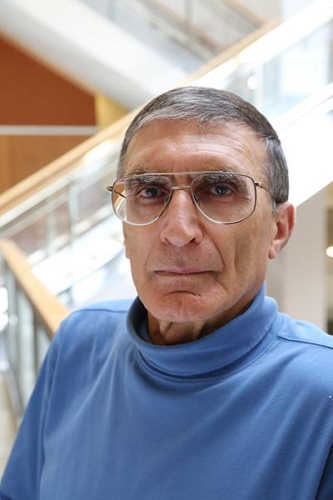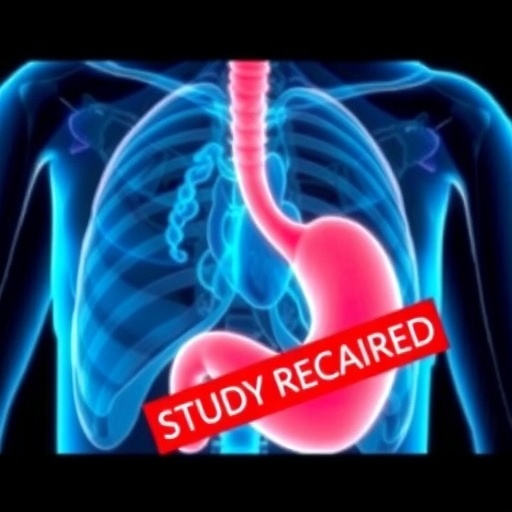When the common chemotherapy drugs cisplatin or oxaliplatin hit cancer cells, they damage DNA so that the cells can’t replicate. But the cells have ways to repair the DNA. The cancer drugs aren’t as effective as patients need. Researchers at the UNC School of Medicine and UNC Lineberger Comprehensive Cancer Center have developed a method for finding where this DNA repair happens throughout all of human DNA.
The findings, published in the journal Genes & Development, offers scientists a potential way to find and target the proteins cancer cells use to circumnavigate therapy. The benefit of this new method could be more effective and better tolerated classes of cancer therapeutics.
The research, led by Aziz Sancar, MD, PhD, the Sarah Graham Kenan Professor of Biochemistry and Biophysics, marks the first time scientists have been able to map the repair of DNA damage over the entire human genome.
“Now we can say to a fellow scientist, ‘tell us the gene you’re interested in or any spot on the genome, and we’ll tell you how it is repaired,'” said Sancar, co-senior author and member of the UNC Lineberger Comprehensive Cancer Center. “Out of six billion base pairs, pick out a spot and we’ll tell you how it is repaired.”
When DNA is damaged, cells use many enzymes to cut the strand of DNA and excise the damaged fragment. Then, other enzymes repair the original DNA so that the cells can function properly. Previously, Sancar’s lab used purified enzymes to discover how this process happens in DNA damaged by UV irradiation and by chemotherapeutic drugs such as cisplatin and oxaliplatin.
In recent years, Michael Kemp, PhD, a researcher on Sancar’s team found that a particular protein called TFIIH bound tightly to the excised damaged DNA fragment in the test tube. But for this information to be truly useful to biomedical researchers, the experiment needed to be replicated in human cells. Extracting a stable TFIIH-DNA fragment proved difficult. Not until postdoctoral fellow Jinchuan Hu, PhD, co-first author on the Genes & Development paper, joined Sancar’s lab could Sancar’s team accomplish the task.
Through a series of sophisticated experiments with human skin cells, Hu exposed the cells to ultraviolet radiation and used an antibody against the enzyme TFIIH to isolate the enzyme complex with the excised DNA damage. Then he created experimental techniques to pull the enzyme – as well as the excised DNA fragment it was bound to – from the cells.
The fragment was stable enough for Sancar’s lab to sequence it. Then, Sheera Adar, PhD, fellow postdoc and paper co-first author, and Jason Lieb, PhD, co-senior investigator of the study, used their expertise in computational biology to analyze where the DNA repair happened throughout the entire genome and thus generate a human genome repair map for the first time.
Because UV radiation and common chemotherapy drugs such as cisplatin cause DNA damage in similar ways, Sancar’s team is now using their new DNA excision repair method – called XR-Seq – to study cells affected by cisplatin. They also hope to use it to study the biochemical reactions in animal models with the goal of finding the specific mechanisms that allow cancer cells to repair DNA damage to survive.
“Cisplatin is an old drug,” Adar said. “Right now, it’s used with other drugs as a combination therapy. We know these drugs make cancer cells more sensitive to cisplatin. But we don’t really know how they do this. We now have an assay to find out how the cells’ DNA is being repaired. Our goal is to make cancer cells even more sensitive to existing drugs to help patients.”
The research also revealed that parts of the genome scientists previously thought did very little are actually part of this repair process.
On chromosomes, DNA forms genes that create proteins – the building blocks of life. Between these genes, there are DNA sequences – simple bits of genetic information.
“People have thought that this DNA didn’t do anything,” Adar said. “But it turns out that proteins bind to these other DNA sequences, and this affects other nearby or far-away genes. Our analysis shows that these DNA regulatory sequences are also being repaired. So, if they’re being repaired, then they’re likely important. And now we can find their locations throughout the genome.”
Story Source:
The above story is based on materials provided by University of North Carolina






